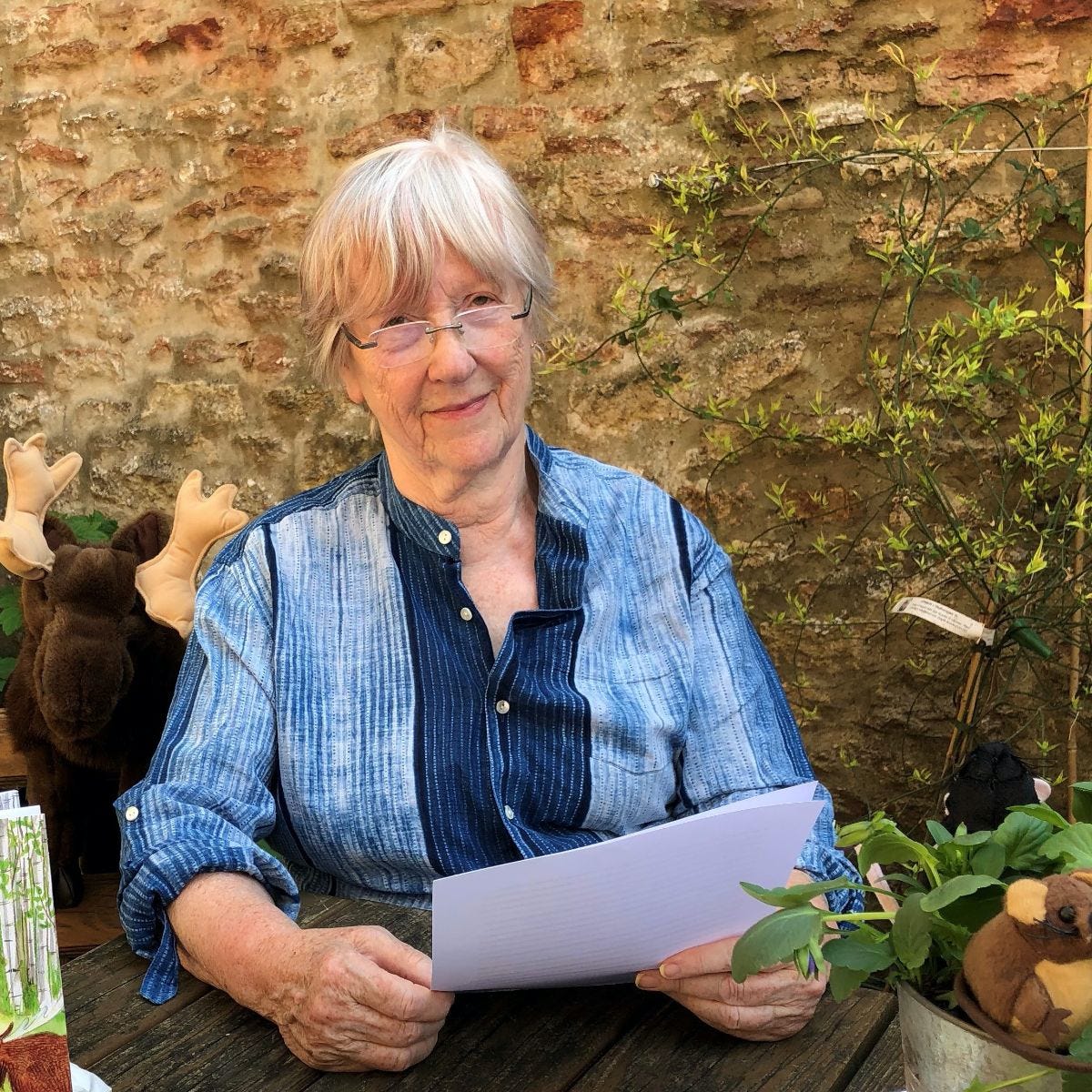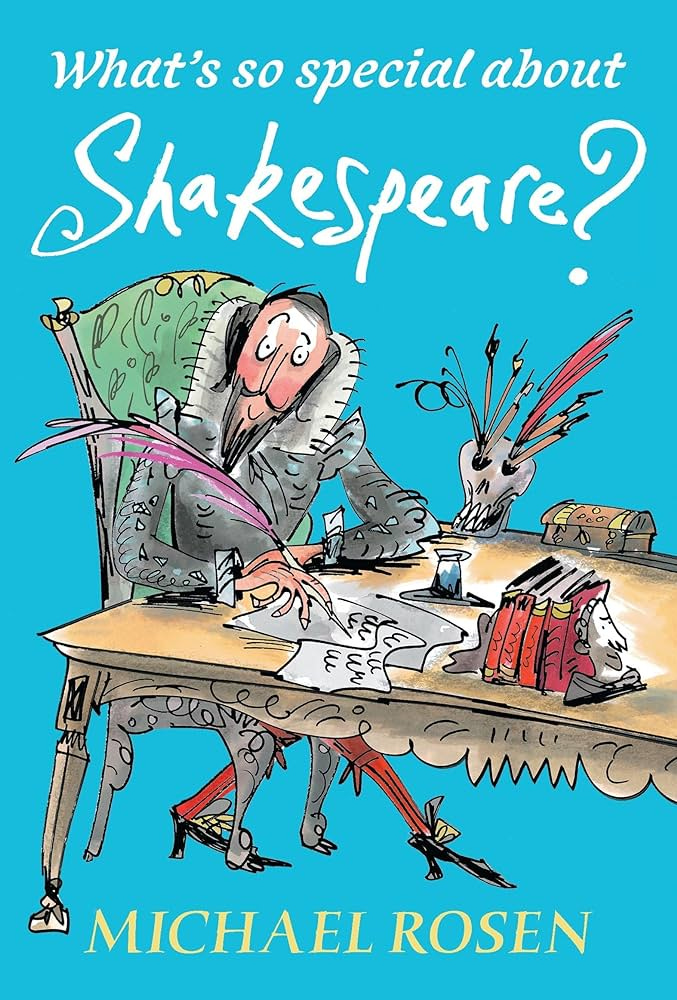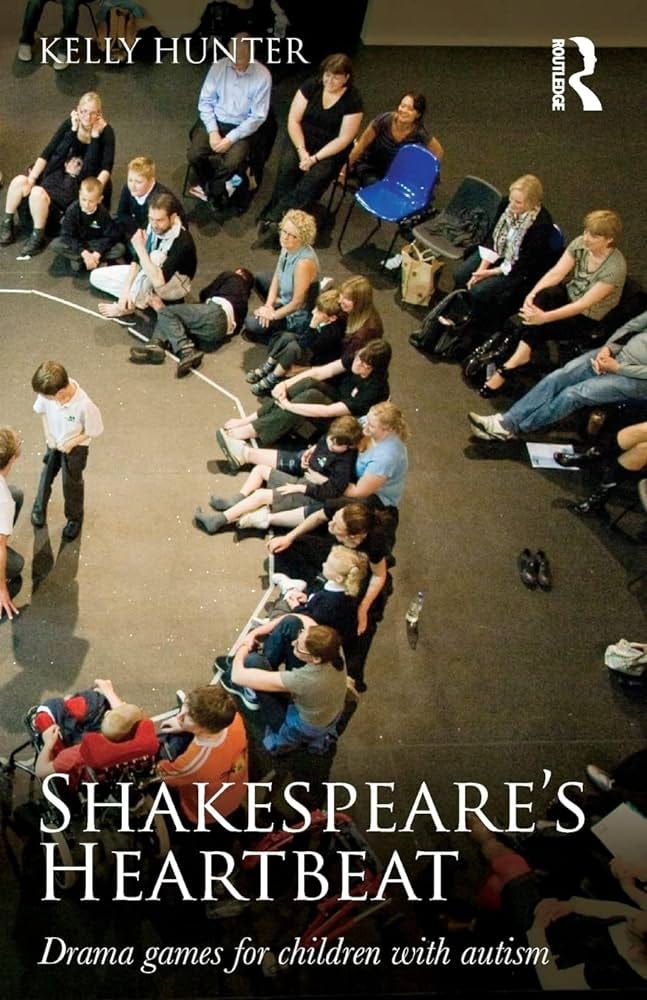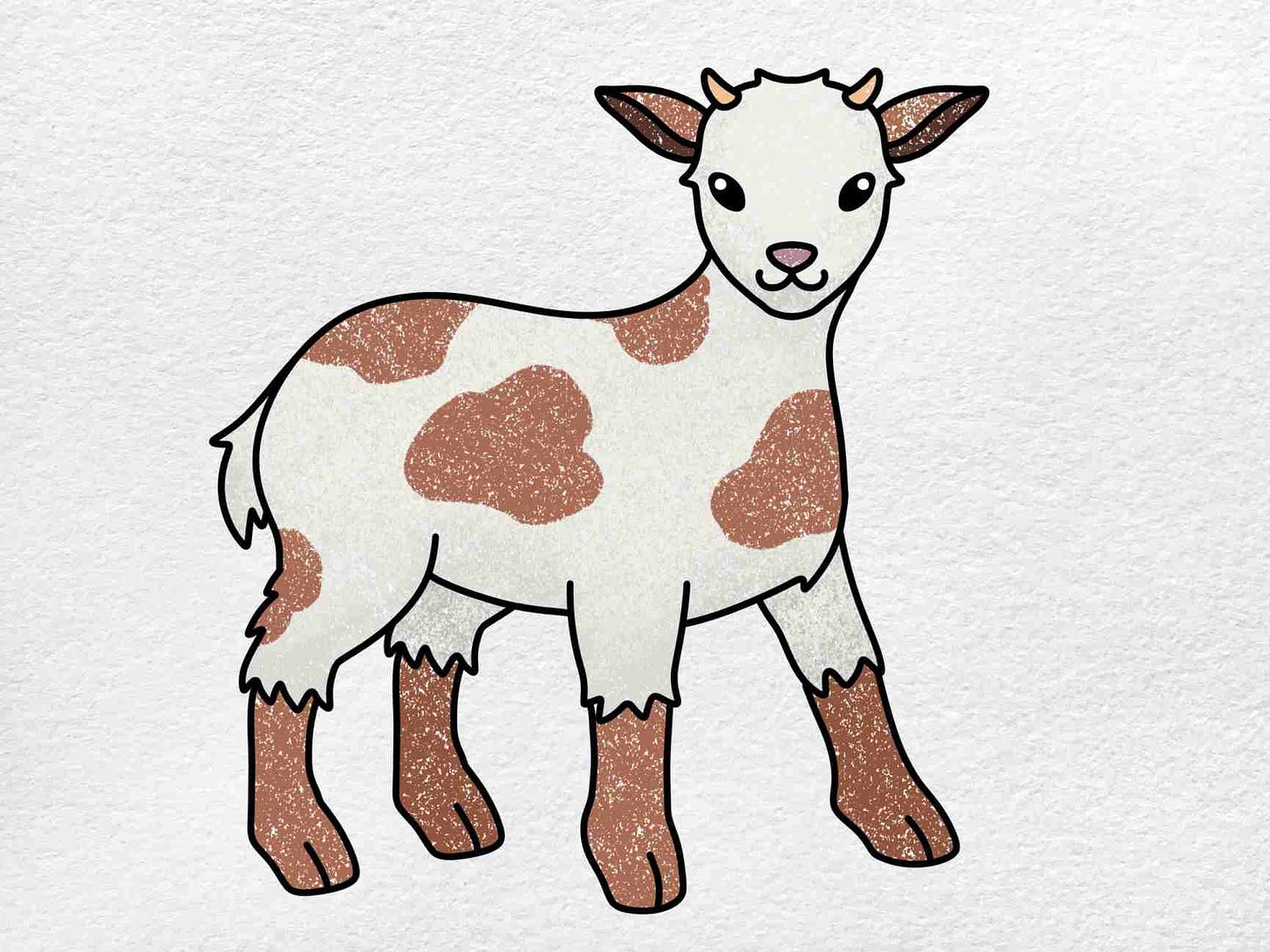Welcome everyone to my second Newsletter, and thank you for the huge response to my first edition. There are too many to reply to individually, but all are appreciated. Thank you again.
The world seems a very busy place right now, with so much change happening. It reminds me of Anthony Newley singing in the eponymous musical, ‘Stop the World, I want to get off!’ Perhaps someone should stage it again!
I have just returned from Athens where I was teaching NDP Greece, and finding new things for the sand tray – more of that next time!
Our paid features start with this edition, new techniques, new stories, time to talk and share, free webinars, and consultation and discussion time. Do sign up as a paid contributor if you can. You will be helping the writer to write!
With Love
Dr Sue
February 2024
What is so Special About Shakespeare?
Is the title of a book for children by Michel Rosen, and it is a gem. Rosen talks about life in Shakespeare’s times and the extreme dangers that writers often suffered. He has a brief introduction to the main plays and makes the very idea of Shakespeare both challenging and exciting. And why is Shakespeare central to the play process in NDP?
I have long suggested that the therapeutic elements of performance are more or less ignored in dramatherapy training. When Steve Mitchell and I first led the dramatherapy training at the Institute of Dramatherapy, there was a requirement for students to go to theatre at least once a month and keep a theatre diary. Some of the visits we organised ourselves to the Royal Shakespeare Theatre. We explored the ideas of the healing elements in performance and used texts from Artaud, Brook, and many others. A part of the training was the annual Dramatherapy and Shakespeare Symposium which was held at Stratford. We went to plays on the Friday and Saturday nights, with workshops all day Saturday. On Sunday we invited actors from the company to join us for an exploration of the therapeutic elements in the productions which became a very exciting dialogue between actors and dramatherapists.
The year that Sir Mark Rylance was playing Hamlet and Clare Higgins was Gertrude, was particularly memorable. Patrick Godfrey played Polonius and the three actors joined us for the Symposium. It was here that Mark Rylance suggested that they took Hamlet to Broadmoor Hospital, which was an innovatory enterprise and one that proved extremely successful. It all went a step further when I suggested that we held a Dramatherapy Symposium at Elsinore Castle in Denmark, the ‘location’ of Hamlet. Clare and Mark attended and became involved in the workshops, and presentations of scenes from Hamlet, as well as some readings from the Sonnets.
The Stratford Symposia continued for five years and contributed to the concept of healing theatre and ‘Dr Shakespeare’. I am continually surprised at the insights Shakespeare had into the humanity of humans, 400 years ago. His work is as important as ever and I hope we can all support the various initiatives in schools and communities to promote Shakespeare as both prevention and cure.
More recently we can be aware of the amazing work of Kelly Hunter who works with Shakespeare with teenagers and young people on the autistic spectrum. As she puts it:
‘The rhythm is the life of the feeling’
Kelly’s theatre company is called the Flute Theatre Company and you can find a lot of information through Google. We strongly recommend her workshops as well as her performances. Her book, Shakespeare’s Heartbeat, is published by Routledge, 2014.
There will be more about therapeutic performance in future Newsletters, including insights into the plays and performances of ancient Greece.
Thanks for being on the journey!
With love
Sue
Bits and Pieces:
Very exciting news: Routledge publishers have formally commissioned me to be the Editor of a new Series of books on Neuro-Dramatic-Play. The first one is ‘Neuro-Dramatic-Play and Infant Mental Health’ which should be published by the end of this year. This will be followed by the Handbook of NDP which was mentioned in the last Newsletter.
Remember the very unique opportunity to study NDP on the island of Naxos 26-31 May with Naxos Creative.
I have had the privilege of seeing a sneak pre-view of a new book on Play Therapy – Reflections on Play Therapy: A Narrative Through Training, Theory and Practice by David Le Vay. It is excellent and a must-have for practitioners and students. To be published by Routledge later this year.
Book Recommendation:
Shakespeare’s Heartbeat by Kelly Hunter, 2014, Routledge.
The book contains drama games through Shakespeare which can be used with all children, not just those on the autistic spectrum. Kelly also describes her work with autism. She is currently working with neuroscientists on the impact of performance on the brain.
This week there is more content available for my subscribers, so don’t delay and join them by clicking the button below and help me to keep writing!
I will finish this free Newsletter with a story from Malaysia.
The Story of Little Goat
Little Goat was called that because he was very small compared to the other goats, but he was strong and wiry, and also wise. The other goats all respected his opinions. One day they were all grazing in the field next to the farm house, and Little Goat could hear the conversation between the farmer and his wife. To his horror he could them planning a dinner for the following night, and he was going to be the main course!!
He summoned all the goats and said that they needed to escape together; even if he ran away, the farmer would just choose another of them. They agreed to meet by the big farm gate at mid-night. They were all there, they opened the gate carefully and closed it after them, then Little Goat led the way as they ran through the night. He was not going to stop until they found somewhere safe.
Eventually they came to a field with a sloping mound, and a river along one side which separated the field from the woods. All the goats threw themselves on the ground and fell fast asleep, but Little Goat stayed awake looking out for any danger. And sure enough, there was tiger on the other side of the river. Little Goat called out in a loud voice, ‘Hello Mr Tiger, good to meet you. We are the tiger-eating goats!’ And having roused the remainder of the goats with his loud voice, they all charged to the edge of the river, making a fearful din with their strong hoofs.
Tiger turned and fled and kept running until he ran out of breath, and flopped down on the ground. Tapir came along and said in a surprised voice ‘What’s the matter tiger, you are out of breath and you are not looking too happy.’ ‘Oh Tapir, I have just been chased by a group of tiger-eating goats and it was really scary.’ ‘What nonsense,’ said Tapir, ‘There is no such thing’ and he snorted. ‘All right’ said Tiger, ‘You can come with me and see them’. And then he added, ‘But only if we tie our tails together, and then I’ll know you won’t run away and leave me.’ So, they tied their tails together and headed back for the river.
Meanwhile, Little Goat was encouraging all the goats to eat the red berries on the bushes by the river, and to let the juice run down their chins and beards. He saw Tiger return with Tapir and called out, ‘Hello again, Mr Tiger. I see you have Mr Tapir with you – we have just eaten your grandfather!’ And Tiger and Tapir thought the goats all had blood running down their chins.
They turned and ran, but the trouble was they were running in opposite directions – they pulled and pulled, and eventually Tapir’s tail came off. Tapir has been without a tail ever since. Tiger ran with Tapir’s tail thumping, and thumping behind him, and eventually he stopped and untied it.
As for the goats they laughed, and laughed and laughed! Clever Little Goat, he had rescued them from three tricky and dangerous situations.
Thank you for reading!









